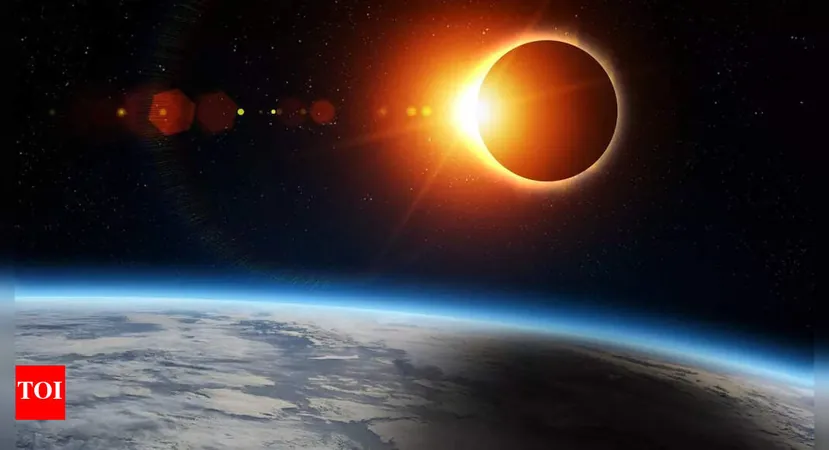
Soaring into Darkness: The 74-Minute Solar Eclipse Experience Aboard Concorde 001
2025-08-31
Author: Rajesh
An Unprecedented Achievement in Astronomy
On June 30, 1973, the world was witness to an astronomical marvel as a groundbreaking mission aboard the Concorde 001 led to the longest total solar eclipse ever recorded: a staggering 74 minutes of uninterrupted totality. This extraordinary event unfurled over the Sahara Desert, thanks to a team of innovative scientists who transformed a supersonic jet into a high-altitude observatory.
Chasing the Shadow: The Science Behind the Eclipse
Total solar eclipses are rare celestial occurrences where the Moon completely obscures the Sun, plunging the Earth into temporary darkness. Typically, maximum totality lasts about 7 minutes from the ground, constrained by Earth’s geography and the Moon’s distance. However, the 1973 eclipse had an unusually long potential for totality. By utilizing the Concorde's supersonic speed, scientists crafted a solution to extend this fleeting spectacle.
Concorde 001: The Supersonic Observatory
Flying at Mach 2.05—over 2,500 km/h—Concorde 001 was not just any aircraft; it was equipped with observation portholes and scientific instruments that turned it into a floating laboratory above the clouds. At altitudes of over 16,000 meters, the jet avoided turbulence and adverse weather, allowing the team to track the Moon's shadow and dramatically elongate the eclipse duration.
Precision and Timing: The Keys to Success
The mission's success hinged on flawless timing and precise calculations. Arriving late or too early could shave off up to 25 minutes of totality, making exact navigation crucial. The scientists focused on two critical moments during the eclipse, known as second and third contacts, to ensure they could maximize the breathtaking experience of darkness.
Unveiling the Solar Corona: A Leap in Research
During the rare 74 minutes of totality, five scientific teams conducted parallel investigations into the solar corona—the Sun's outer atmosphere, which is only visible during such eclipses. Through high-resolution imaging and tracking dynamic features, they gathered important data that enhanced understanding of solar physics, all made possible because of the extended observation time provided by the Concorde.
The Legacy of the Concorde Mission
The remarkable achievements of the 1973 Concorde mission set a new precedent in solar eclipse research. Techniques pioneered during this flight have influenced modern astronomy; for instance, NASA now employs WB-57 aircraft for stratospheric eclipse studies, while the European Space Agency is exploring artificial eclipses using coordinated satellites. Concorde 001 demonstrated that airborne studies could significantly surpass traditional ground-based observations, opening up new horizons for future discoveries.
Inspiring Future Generations
The legacy of this mission lives on, inspiring astronomers and engineers alike. By perfectly synchronizing with the Moon's shadow, the Concorde 001 experience allowed humanity to delve deeper into cosmic wonders, forever altering the landscape of eclipse research. With 74 minutes of continuous darkness achieved at supersonic speeds, this extraordinary journey into the sky not only provided vital scientific insights but also sparked a sense of awe for the universe.



 Brasil (PT)
Brasil (PT)
 Canada (EN)
Canada (EN)
 Chile (ES)
Chile (ES)
 Česko (CS)
Česko (CS)
 대한민국 (KO)
대한민국 (KO)
 España (ES)
España (ES)
 France (FR)
France (FR)
 Hong Kong (EN)
Hong Kong (EN)
 Italia (IT)
Italia (IT)
 日本 (JA)
日本 (JA)
 Magyarország (HU)
Magyarország (HU)
 Norge (NO)
Norge (NO)
 Polska (PL)
Polska (PL)
 Schweiz (DE)
Schweiz (DE)
 Singapore (EN)
Singapore (EN)
 Sverige (SV)
Sverige (SV)
 Suomi (FI)
Suomi (FI)
 Türkiye (TR)
Türkiye (TR)
 الإمارات العربية المتحدة (AR)
الإمارات العربية المتحدة (AR)